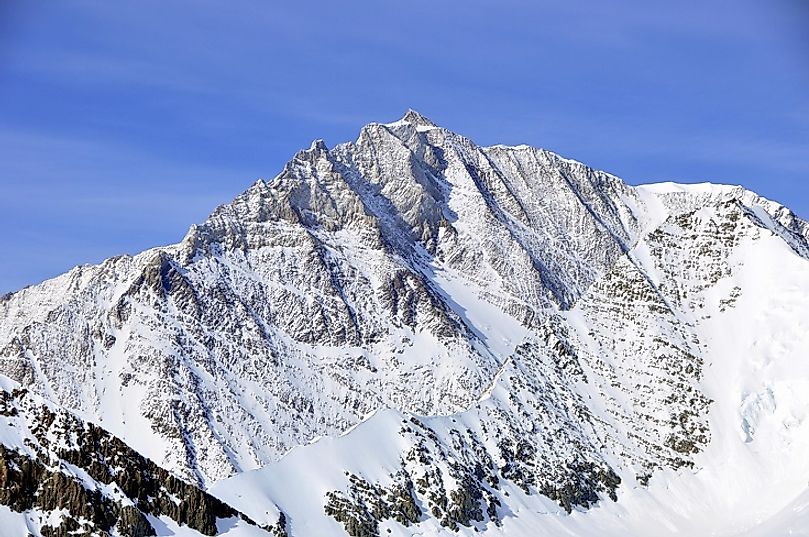Where Does Mount Shinn Rise?

5. Description
The third tallest mountain in Antarctica, Mount Shinn rises to an elevation of 15,292 feet in the Sentinel Mountain Range. It was discovered in January of 1958, and is situated in the Ellsworth Mountains in the Antarctic. The mountain was named after US Navy pilot Lieutenant Commander Conrad S. (Gus) Shinn, who also flew in some of the reconnaissance flights over the Antarctic in the mid-1950s. Explorers, visitors, and tourists have visited the area to climb, walk over the South Pole, or fly to the pole. The best time to attempt an outing in one of the mountains in the Sentinel range is in the summer months from November to January. An airline and tour company are based in the Patriot Hills during summer camp season, and the number of tourists here reaches peaks in the summer.
4. Historical Role
Mount Shinn was originally calculated to sit at 4,800 meters high, but Damien Gildea and Rodrigo Fica remeasured the mountain's height with a Trimble 5700 GPS receiver and the AUSPOS processing system working for the Australian government. It was then determined as being the third highest peak in the Ellsworth area. Mount Shinn's peak was first conquered by a group of mountaineers composed of Richard Wahlstrom, Sam Silverstein, Charles Hollister, and Barry Corbet on December 21st, 1966. Before this first successful ascent was made, there were several prior US surveys in 1961-1962 and then again in 1979-1980 to accurately measure the mountains in the Ellsworth Mountain area. However, there was no published data on Mount Shinn after the 1979 survey until Gildea and Fica measured Shinn again at that time.
3. Modern Significance
Ellsworth Land is the area where Mount Shinn is located, and so are several other high-reaching peaks of the Sentinel Mountain Range. The highest peak is Mount Vinson, followed by Mount Tyree and the aforementioned Mount Shinn. There are eight scientific research stations in the area, and their needs are air-supplied when weather is permitting. Scientific research here includes the study of soil, organisms, and glacial history of the area. There are about 4,000 people who work in the scientific research stations during the summer season. However, in winter, the number is reduced to 1,000 personnel. If world records were factored in the Antarctic where Mount Shinn is located, the continent would have the world records for wind chill and cold air temperatures at its high altitude.
2. Habitat
The Sentinel mountain range has about 1,000 kilometers of ice-free land. These can be found in the Patriot, Independence, Liberty, and Marble areas. There are as many habitats as other mountains in other continents, but some areas have only ice sheets and snow, as the mountains are almost always covered in them. Annual rainfall in the Sentinel area is less than an inch, while snowfall is also at its minimum. Although some areas are permanently covered with ice and snow, there are deserts, plateaus, glaciers, plains, valleys, and nunatak habitats found here as well. The whole of Antarctica has six months of winter nights and six months of summer daylight. Its ice sheets, if all melted, could raise the world's ocean levels by about 200 feet.
1. Threats and Disputes
The Antarctic continent was reached by Norwegian explorer Roald Amundsen in 1911, and has since been subjected to such human impacts as tourism and research. There are more serious concerns as well, like like prospects for mining and oil explorations. Overfishing by nations has also become a threat to the nearby Southern Ocean and its marine life's biodiversity. The hunting of Antarctic mammals like fur seals, whales, and other land animals have put several them on the "Endangered" list. Global warming and climate change are two factors that would affect the world as a whole, given that ice sheets and glaciers are threatened with melting and raising the water levels of the world's oceans. Water pollution in the Antarctic could harm its ecosystem, as well as that of the Southern Ocean, which supports many of the major water currents of the world's seas.











